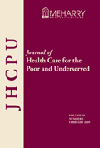ACU belongs to the EPA’s AsthmaCommunityNetwork.org, an interactive online community designed for asthma champions to share, learn, and connect with peers to advance asthma care. Join this national network of community-based programs and access cutting-edge tools, the latest strategies and hundreds resources in asthma care and management.
Schedule a Training
 ACU offers training for primary care providers and community workers on Building an Asthma Care Home: Engaging Clinicians, Patients and Caregivers in Comprehensive Asthma Management. Training is tailored to the needs of the audience and can be conducted in English or Spanish. Continuing professional education credit is available. If you or your organization is interested in hosting a training session, please contact Lois Wessel, CNFP for more information.
ACU offers training for primary care providers and community workers on Building an Asthma Care Home: Engaging Clinicians, Patients and Caregivers in Comprehensive Asthma Management. Training is tailored to the needs of the audience and can be conducted in English or Spanish. Continuing professional education credit is available. If you or your organization is interested in hosting a training session, please contact Lois Wessel, CNFP for more information.
Asthma Care for Underserved Populations
ACU is currently engaged in a multi-year project to improve the quality of asthma healthcare for underserved populations. Goals of the project include training clinicians to provide asthma trigger education, management and mitigation strategies within the framework of culturally and linguistically competent care.
The four-year project is funded by a cooperative agreement with the U.S. Environmental Protection Agency (EPA). With the new funding, the ACU will enhance an existing asthma training curriculum, utilize health information technology (IT) to improve asthma trigger management and education, and produce low literacy patient self management materials in English, Spanish and three Asian languages.
ACU iPhone Application on Pediatric Asthma
ACU’s first iPhone application on Pediatric Asthma and Indoor Trigger Management is now available free of charge in English and Spanish for your iPhone or iTouch. Go to the Apple App Store and search for and download the APPRISOR Viewer. From within the viewer, the APPRISOR content can be downloaded.
Detailed instructions:
- Go the Apple App Store from the iPhone or iPod Touch and download APPRISOR.
- Open APPRISOR; you will be prompted to tap the “…” button.
- Choose “Download New Content.”
- After tapping “Download New Content,” choose “Content by Association,” then select ACU from the list.
- Select from available documents and tap once to begin download.
- Tap to open the document or continue to select and download documents.
Asthma Indoor Trigger Reduction Tool Card
Explains the six C’s of pedicatric asthma case management for clinicians and health workers providing guidance to assist patients in reducing indoor asthma triggers. Cultural, linguistic and practical realities are addressed. Includes a summary of key points and space for users to add local asthma advocacy contact information.
Asthma Indoor Trigger Reducation Tool Card (English) (PDF)
Order laminated copies using the ACU order form (PDF).
Resources
ACU’s NEW comprehensive Asthma Resource List
Here in one location, you can find resources including clinical guidelines, patient education and self-management materials, policy briefs, asthma reports, clinical toolkits, mobile technology and asthma information, and smoking cessation and tobacco materials.
Many of the resources are available in both English and Spanish, and some in other languages, including Chinese. Also included are a variety of multimedia tools such as videos and interactive web sites. There are even links to asthma-related training courses where continuing education credits are available.
A Collaborative Approach to Preventing and Treating Asthma in Infants and Young Children (PDF)
Article by Lois Wessel, ACU, and Jacqueline Spain, Holyoke Health Center; reprinted from Zero to Three.
Background
Asthma is the most common chronic disease among children in the US. According to the Centers for Disease Control and Prevention, 9.3 percent of children under the age of 18 have asthma. Children of low-income families experience disproportionately higher morbidity and mortality due to asthma.
Indoor asthma triggers such as mold, dust mites, and cockroaches can contribute to asthma. According to the EPA, the average person spends 90 percent of their time indoors – so controlling indoor environmental triggers is integral in controlling asthma.
Asthma treatment following the National Heart Lung and Blood Institute guidelines consists of medication management, testing lung capacity, and developing partnerships with patients to educate them on reduction of triggers.
ACU’s work in asthma education focuses the goal of developing effective partnerships with patients and their families to provide education that empowers families to reduce their trigger exposure.
 Follow
Follow





Follow Us!